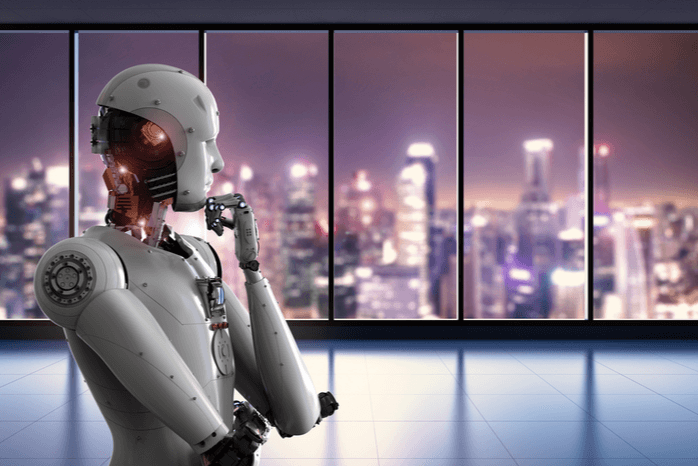Predictions in Robotics for the next two decades

Earlier this year, Samsung introduced the Bot Handy, a multifunctional housewife robot, while scientists from Germany and Switzerland showed the soft hugging robot HuggieBot 2.0. During the coronavirus pandemic, such news began to appear with increased frequency.
However, despite promising advances in the field of robotics, it is still difficult to predict where and how far robots will spread. We offer you an overview of the tendencies in robotics for the next two decades.
Personal assistant by 2027
Opinions about the imminent arrival of the era of personal robots are heard quite regularly. In the late 2000s, Microsoft founder Bill Gates published an article titled “A Robot in Every Home.” Google visionary Ray Kurzweil predicted that by 2027, a personal robot will become “as commonplace as a refrigerator or a coffee maker.”
How is a household robot useful? Samsung recently tried to answer this question: the Bot Handy robot, which was introduced in January, can serve the table, load clothes into a washing machine, and serve a glass of wine. However, this is not the first attempt. In 2017, Toyota demonstrated a Human Support Robot device to help lonely disabled people: the robot was able to open doors and fetch a bottle of water. In 2018, the American robot Aeolus was announced, which can wash floors with a mop.
These are all test samples: the limited set of functions does not yet allow them to be released to the mass market. The price has not been announced either, but it should better be low for the successful sales of such assistants; otherwise, it would be easier to hire a nurse or a housekeeper.
Versatile home robots by 2030s
Companion robots by the mid-2030s look the most promising. Obviously, a home robot will combine many functions. Why do you need a separate cleaning robot or a nanny robot? They will only take up space. It’s easier when everything is in one, for example: in the morning and in the afternoon our robot plays with children, later he acts as a psychologist for our parents, and then he washes and irons clothes in the evenings.
Similar developments are also available. The Japanese company Vstone has created miniature robotic dolls Sota (Social Talker) and CommU (Communication Unity), whose roles are reduced to maintaining a conversation, and in order to endear a person, they speak with children’s voices. Asus’ Zenbo companion is larger and serves as a kind of home secretary: entertains children, records photos and videos, controls smart devices, and gives an alarm. And Honda introduced a whole line of home robots in different layouts: for carrying loads, for doing housework, and for showing empathy.
Strong AI by 2029
Today, “smart” robots are created on the basis of “weak” artificial intelligence, designed for solving specific problems (intelligent systems). Meanwhile, the task of creating “strong” artificial intelligence, comparable to the human mind (human-like intelligence), has not been removed from the agenda. In the mid-2000s, the Blue Brain project was launched in Switzerland to simulate the work of the brain on the IBM Blue Gene / Q supercomputer. Although, its power was only enough to recreate individual parts of the rat brain. Simulating the human brain will require quantum computers, which are still in the development phase.
Existing forecasts say that we will get “strong” AI by 2029 if the current rate of increase in capacity in the digital world continues. But in recent years, there has been a growing awareness that it is not so much a matter of computational capabilities as of the architecture of neural networks. Even on today’s computers, neural networks are making breakthroughs in basic science. For example, last year, AI was able to predict the bulk structure of a protein from its amino acid sequence – a problem biologists have not been able to solve for 50 years. It’s only the beginning!
Do robots dream of superiority?
However, already now, long before the creation of a “strong” AI, humanity is worried. At the beginning of this year, a study was published by the Max Planck Institute for Human Development (Germany), the main conclusion of which sounds like a sentence: having created machines equal to human intelligence, a person will inevitably lose control over them. Will the machine revolt happen next, as described many times by science fiction writers? Experts’ opinions differ here.
Everyone has smartphones and computers, and they freeze from time to time. Isn’t it an uprising of machines? But today you know how to deal with it: neither the smartphone nor the computer resists the fact that you restart it. However, if there is no such button or the machine resists, the consequences can be tragic. After all, a simple virus is enough to make a smartphone go crazy.
“Why does everyone think robots will want to compete with us?”, asks Ray Kurzweil. If an intelligent system is created that is engaged in continuous self-development, then, having reached the level of intelligence of a human brain, it will stay on this level for a few seconds and move on – far beyond our mental capabilities. Such an intelligent system will have little interest in interacting with us, and will essentially dominate us.







